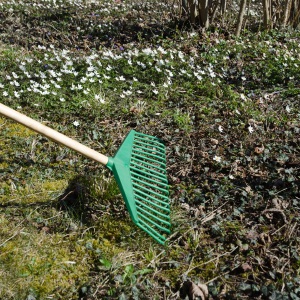My Turn: The new climate normal
| Published: 01-18-2023 2:54 PM |
For us that love the winter in hills of the northern Pioneer Valley, this winter season has been a challenge. There is not enough snow for cross-country skiing or snowmobiling and a bit too warm for safely skating on the lakes. This is just the luck of the draw for this year’s weather, although the most recent regional climate assessment out of University of New Hampshire states that there is a documented climatic trend of warmer winters, resulting in wetter and heavier snowfalls and a higher likelihood of icing.
And although some us bemoan this new climate normal, there is an even greater storm, or lack there-of, on the horizon. The Washington Post recently highlighted an Arizona town whose neighborhood’s water supply had been cut off due to the extended drought. This is just the first ripple for all the states that receive water from the Colorado River. According to Scientific American, the entire Colorado Plateau is in the longest drought that it has experienced in more than 1,200 years, and the National Oceanic and Atmospheric Administration projects that future climate conditions for this area of the country will be warmer temperatures, less snow-pack and higher frequency of extreme droughts.
So why should we be concerned way over here on the Connecticut River. Well, according to the U.S. Department of Agriculture, approximately 50% of the produce we consume, such as beans, lettuce, tree fruit and nuts, come from this region, especially from the states of Arizona and California and even parts of northern Mexico. USDA adds that this is a region where 92% of its agriculture requires irrigation — irrigated water which also supplies the feed for the livestock in these and other Southwestern states.
The major source of this irrigated water is the Colorado River, a river watershed with a water deficit so great that both the large reservoirs associated with the river’s Hoover and Glen Canyon dams, have dropped to such low levels that “dead zones” are forming behind the dams, which is due to the lack of biologically life-saving oxygenated waters coming from upstream. Concurrently, as the water levels continue to drop behind these hydro-electric dams, it will soon be so low that water will not be able to be diverted to the electric turbines. A recent study by Power Consulting said with the loss of hydro-power due to the large-scale drought, the western power grid is poised to experience blackouts.
The overarching federal agency that determines how much water each state can receive from the Colorado River has told the receiver states that they need to cut their demand drastically, and immediately. If these states take no action, the water flow will be reduced to these states, not only impacting agriculture, but cities as well. So, if you see in the not too distant future an inflationary jump in the price of your fresh produce and meat, or you start to hear of disruption to industries that are highly dependent on electricity, such as the servers that provide the nation its computer cloud storage, you might begin to connect the dots between the driver that dumps that hard-to-shovel wet snow here being intimately linked to those dry, hot-scorching days there.
Michael H. Simpson is a professor in the Environmental Studies & Sustainability Department at Antioch University-New England in Keene, New Hampshire.

 Guest columnist Jonathan Kahane: Clapping back at no-good scammers
Guest columnist Jonathan Kahane: Clapping back at no-good scammers Brenda Davies: Makes some healthy changes for our planet
Brenda Davies: Makes some healthy changes for our planet My Turn: April is second chance month
My Turn: April is second chance month My Turn: A moral justification for civil disobedience to abortion bans
My Turn: A moral justification for civil disobedience to abortion bans
